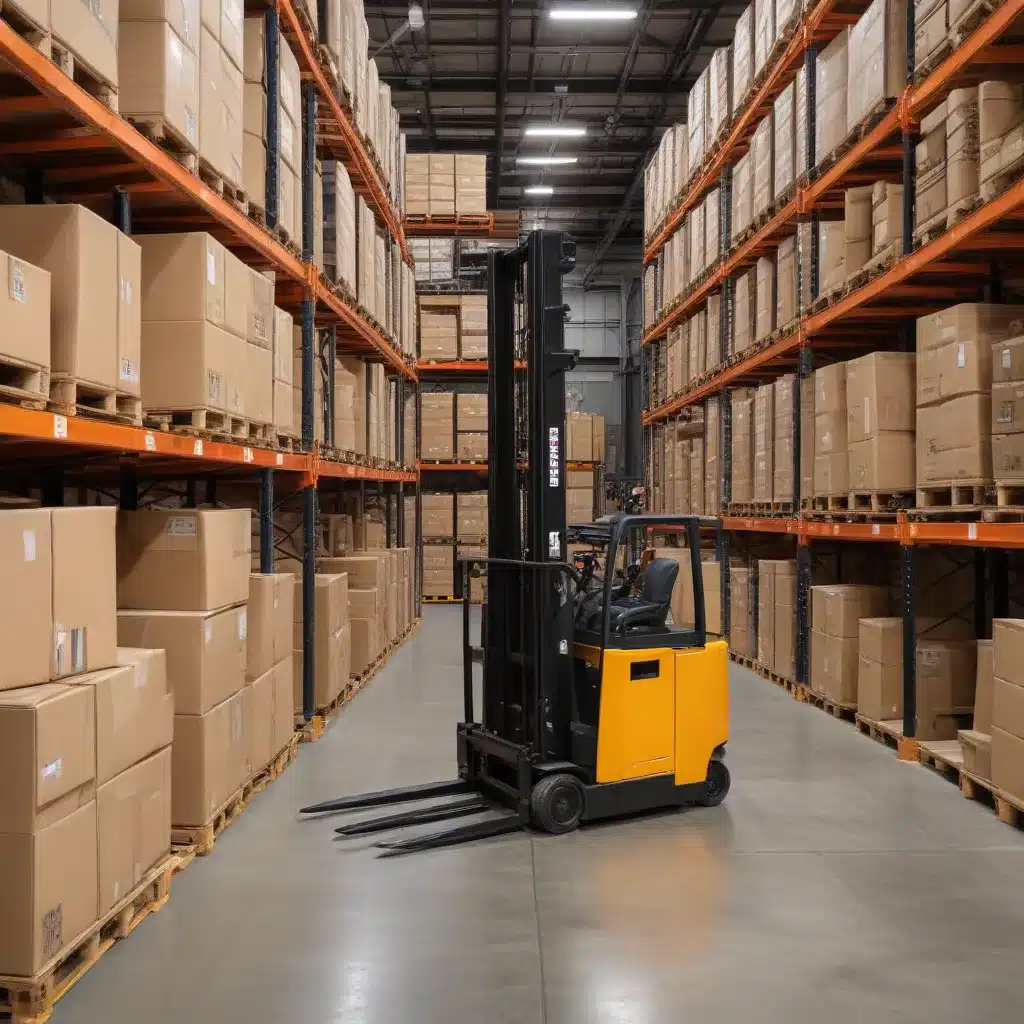
Revolutionizing Warehouse Operations with Autonomous Forklifts
In today’s fast-paced business environment, warehouses and logistics operations face mounting pressure to enhance efficiency, reduce costs, and meet the demands of increasingly sophisticated supply chains. One transformative solution that is rapidly gaining traction is the integration of autonomous forklift technology. By harnessing the power of artificial intelligence (AI) and advanced robotics, forklift autonomous load handling is revolutionizing the way warehouses operate, driving productivity, safety, and profitability to new heights.
Autonomous Forklifts: The Future of Material Handling
Autonomous forklifts are revolutionizing warehouse operations by providing a level of efficiency, precision, and reliability that was once unimaginable. These state-of-the-art machines utilize a combination of sensors, computer vision, and AI-powered navigation to navigate warehouses and perform complex material handling tasks without the need for human intervention.
From precisely maneuvering through congested aisles to seamlessly lifting and transporting heavy loads, autonomous forklifts are redefining what’s possible in the warehouse. By eliminating the need for manual forklift operators, these intelligent machines can operate 24/7, maximizing utilization and throughput. Additionally, autonomous forklifts demonstrate unparalleled consistency and accuracy, reducing the risk of human error and ensuring reliable, damage-free handling of valuable inventory.
Optimizing Warehouse Workflows with Autonomous Load Handling
The integration of autonomous forklift technology into warehouse operations offers a multitude of benefits that can significantly improve productivity and throughput. Let’s explore some of the key ways in which this innovative solution is transforming the industry:
Increased Efficiency and Throughput
Autonomous forklifts can operate continuously without the need for breaks or shift changes, enabling warehouses to maintain a steady, uninterrupted flow of materials. By eliminating the constraints of human operators, these self-driving machines can optimize their movements, minimize travel distances, and execute tasks with lightning-fast efficiency. This translates into a substantial increase in overall warehouse throughput, allowing businesses to fulfill more orders and serve customers more effectively.
Enhanced Inventory Management
Autonomous forklifts excel at precise inventory tracking and management. By integrating with warehouse management systems (WMS) and utilizing advanced sensors, these machines can accurately locate, identify, and retrieve specific items with unparalleled precision. This level of inventory visibility and control enables warehouses to maintain optimal stock levels, reduce the risk of stockouts, and streamline the order fulfillment process.
Improved Safety and Reduced Accidents
Autonomous forklifts are designed with a strong focus on safety, utilizing a comprehensive suite of sensors and advanced safety features to navigate warehouses without endangering personnel. These machines are equipped with robust collision avoidance systems, automatically detecting and responding to obstacles, pedestrians, and other equipment in their path. By eliminating the risk of human error and ensuring consistent, controlled movements, autonomous forklifts significantly reduce the likelihood of accidents and injuries, creating a safer working environment for all.
Cost Savings and Operational Flexibility
Investing in autonomous forklift technology can yield substantial cost savings for warehouses. By reducing the need for human operators, businesses can lower labor expenses, eliminate the costs associated with employee training and turnover, and minimize the risk of accidents and associated liability. Moreover, the flexibility and scalability of autonomous forklifts allow warehouses to adapt to changing demands and seasonal fluctuations without the constraints of a fixed workforce.
Integrating Autonomous Forklifts into Your Warehouse
Seamlessly incorporating autonomous forklift technology into your warehouse operations requires careful planning and collaboration with industry experts. Here are some key considerations to ensure a successful implementation:
Assess Your Warehouse Layout and Infrastructure
Evaluate your existing warehouse layout, including aisle widths, ceiling heights, and overall floor plan, to ensure compatibility with autonomous forklift solutions. Some autonomous forklifts may require specific infrastructure modifications, such as the installation of navigation markers or wireless charging stations, to function optimally.
Evaluate Your Material Handling Needs
Analyze your current material handling requirements, including the types of loads, weight capacities, and handling frequencies. This information will help you identify the most suitable autonomous forklift models and configurations to meet your unique needs.
Collaborate with Trusted Partners
Partnering with experienced forklift and warehouse automation providers, such as Forklift Reviews, can greatly facilitate the integration of autonomous forklifts. These experts can guide you through the selection process, provide installation and training support, and ensure seamless integration with your existing systems and workflows.
Prioritize Safety and Operator Training
Maintaining a strong focus on safety is crucial when introducing autonomous forklifts into your warehouse. Ensure that your team receives comprehensive training on the operation, maintenance, and safety protocols of these machines to foster a culture of safe practices.
Continuously Optimize and Iterate
Adopting a continuous improvement mindset is key to maximizing the benefits of autonomous forklift technology. Regularly review performance data, identify opportunities for optimization, and work closely with your provider to refine processes and adapt to evolving warehouse requirements.
Embracing the Future of Warehouse Automation
As the demand for faster, more efficient, and cost-effective warehouse operations continues to grow, the integration of autonomous forklift technology is poised to become a game-changer in the material handling industry. By harnessing the power of AI and robotics, businesses can unlock unprecedented levels of productivity, safety, and cost savings, positioning themselves for long-term success in the rapidly evolving logistics landscape.
Embrace the future of warehouse automation and explore the transformative potential of autonomous forklift technology. Partner with industry-leading experts at Forklift Reviews to unlock new heights of operational excellence and stay ahead of the competition.

